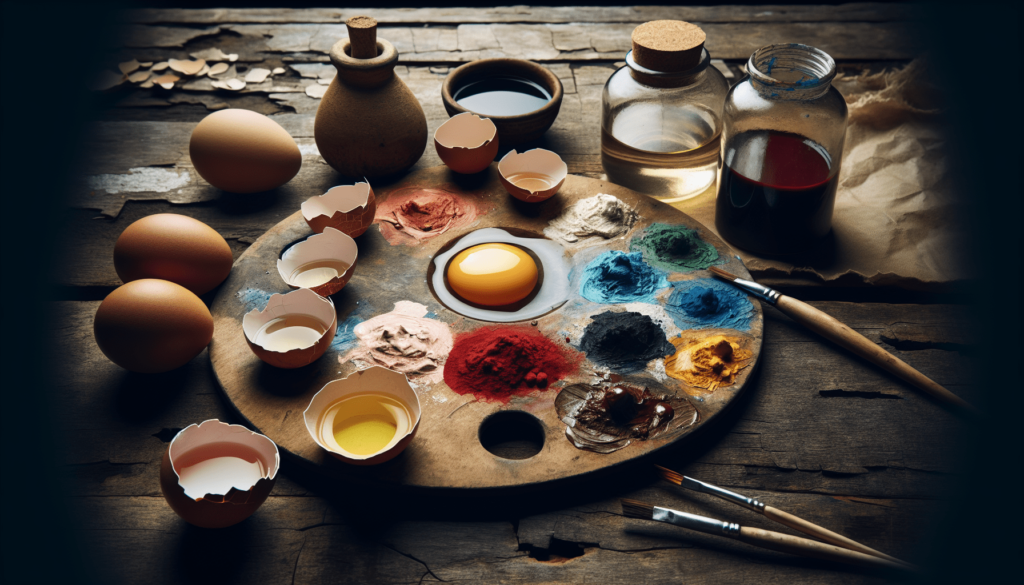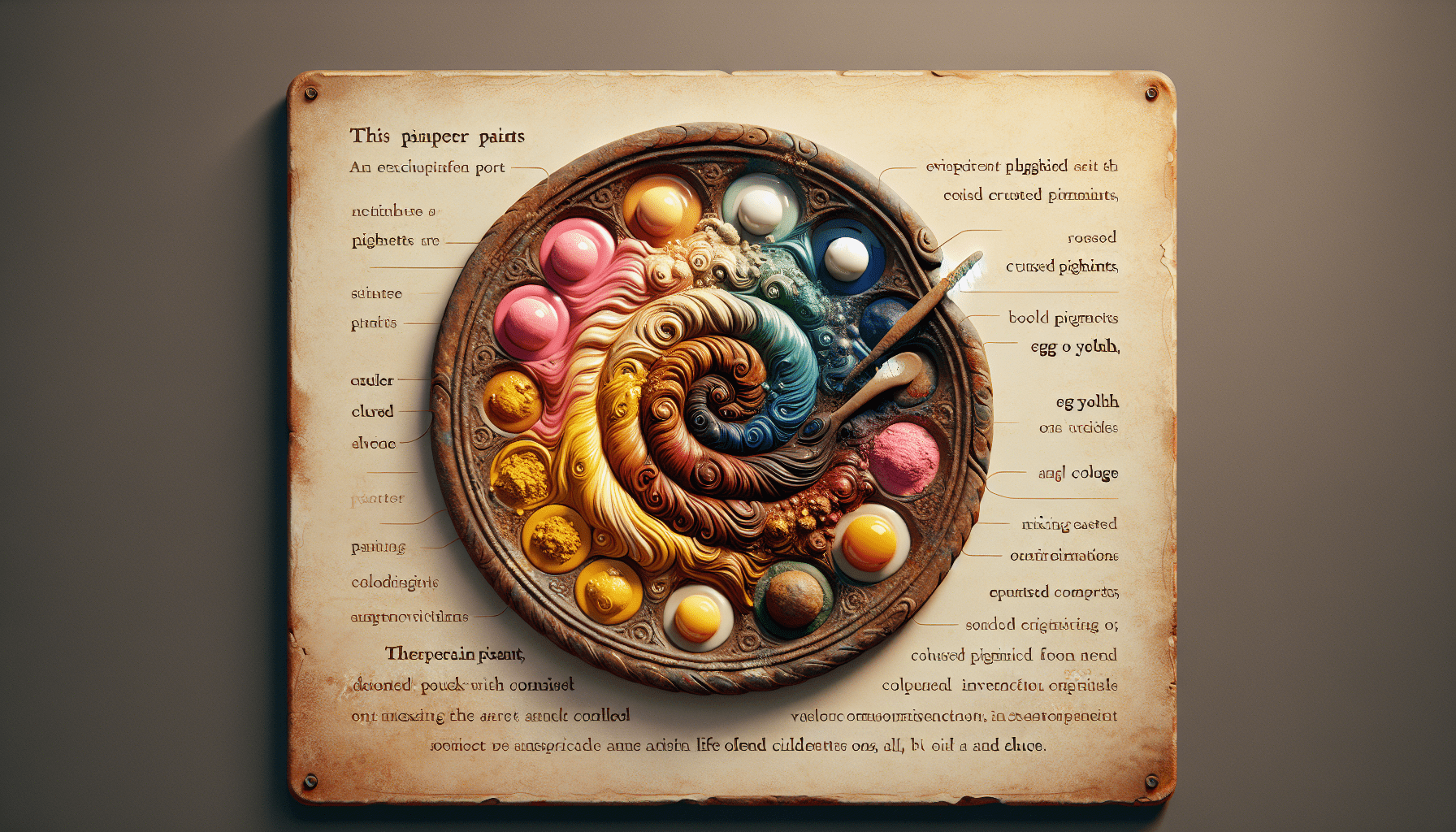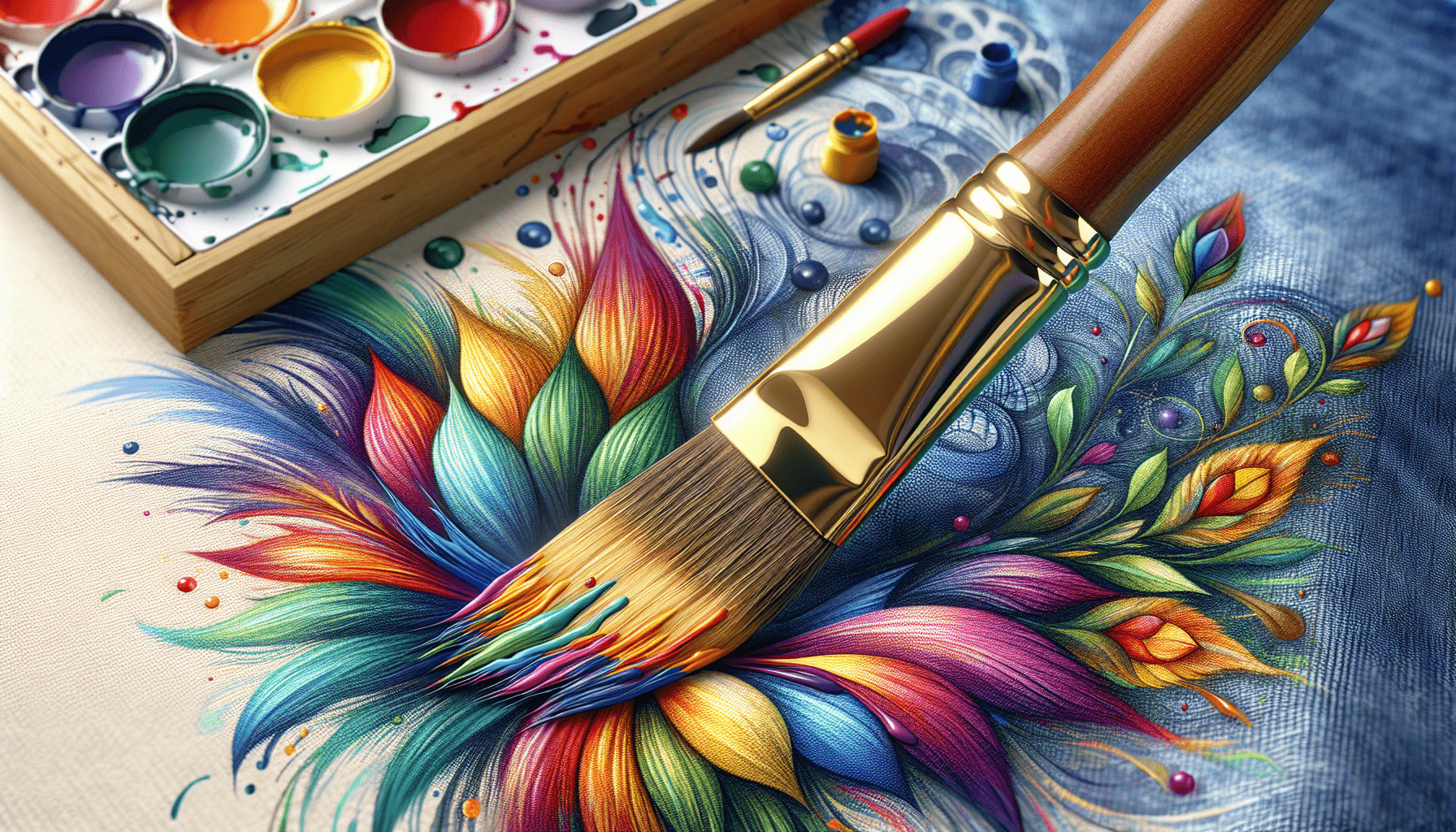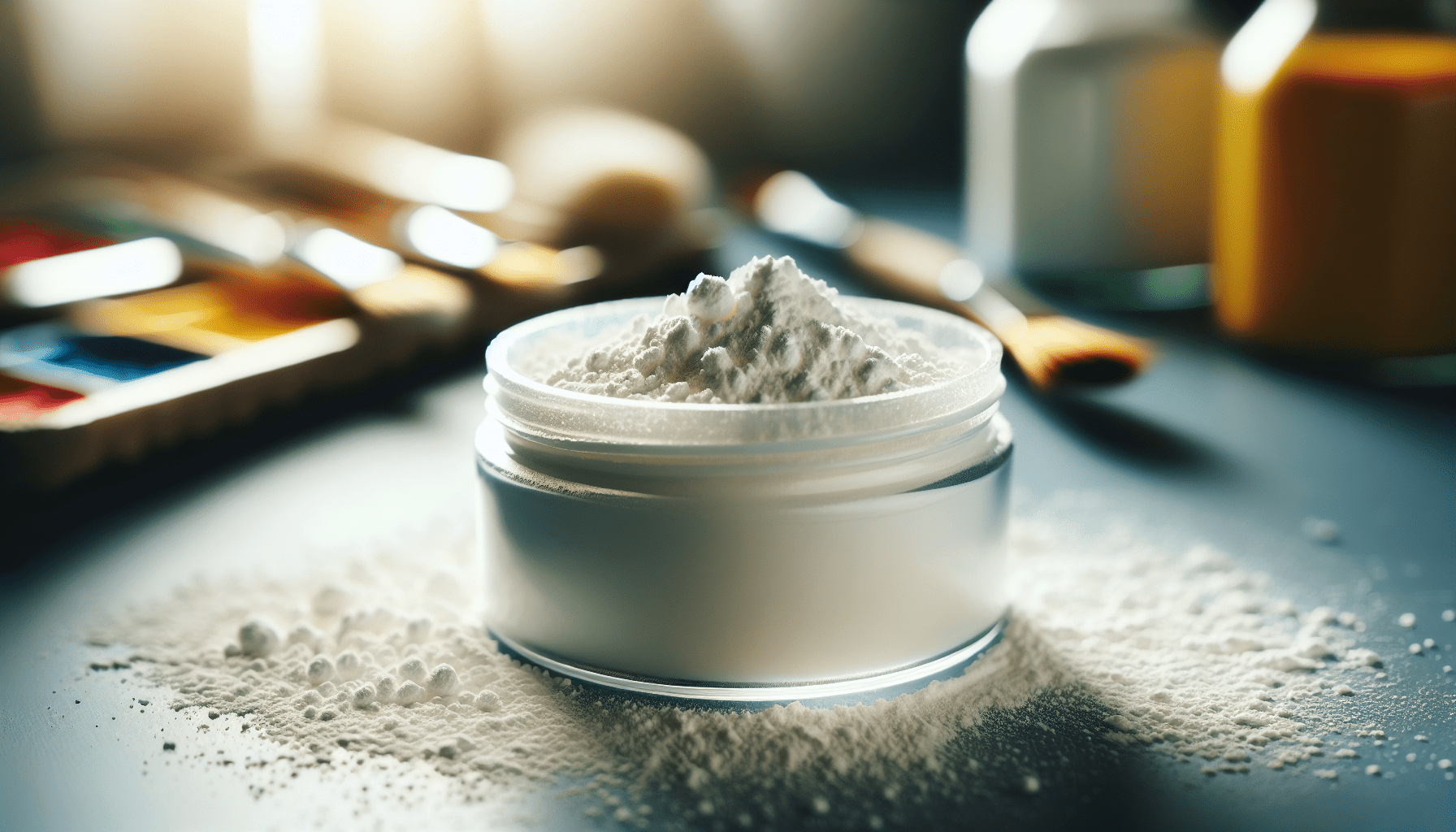Tempera paint, a medium that has been consistently used by artists for centuries, has a rich history rooted in its unique composition. This article examines the intriguing question: What was tempera paint mixed with? By exploring the various ingredients used to create this ancient painting medium, we gain a deeper understanding of the craftsmanship and artistry that goes into the creation of tempera paint. Journey with us as we uncover the secrets behind this beloved artistic tradition.
Introduction
Tempera paint, also known as egg tempera, is a painting medium that has been used for centuries. It is a versatile and durable medium that provides rich colors and excellent opacity. In this article, we will explore the historical background of tempera paint, its composition, variations in formulation, additives and modifiers, modifications for modern use, techniques and application, advantages and disadvantages, and comparisons with other painting mediums.
Historical Background
Early Origins of Tempera Paint
The origins of tempera paint can be traced back to ancient times. It is believed to have originated in ancient Egypt and was used by the Egyptians as early as 1500 BCE. The Egyptians mixed powdered pigments with a water-based medium, such as gum arabic or adhesive. This mixture was then applied to various surfaces, including papyrus and wooden panels.
Usage in Ancient Civilizations
Tempera paint was not only popular in ancient Egypt, but it was also widely used in other ancient civilizations. The Greeks and Romans utilized tempera paint for a variety of purposes, including mural paintings, manuscript illuminations, and decorative arts. The Byzantines further refined the technique and used tempera paint extensively in their religious iconography.
Development in Medieval and Renaissance Periods
During the medieval and Renaissance periods, tempera paint became the preferred medium for panel paintings. Artists such as Giotto, Botticelli, and Raphael employed tempera paint to create intricate and detailed works of art. The technique reached its peak during the Renaissance, with artists using tempera paint to achieve a wide range of effects, from delicate glazes to impasto textures.

Composition of Traditional Tempera Paint
Liquid or Powdered Pigments
Traditionally, tempera paint was made by grinding pigments into a fine powder. These pigments could be sourced from various natural materials, such as minerals, plants, or even insects. The powdered pigments were then mixed with a binder to create a paintable consistency.
Egg Yolk Emulsion
The key component of traditional tempera paint is the egg yolk. The egg yolk acts as a binder, holding the pigments together and allowing them to adhere to the painting surface. The yolk is separated from the egg white and mixed with water to create an emulsion. This emulsion is then combined with the powdered pigments to form the paint.
Water
Water is an essential component in tempera paint. It serves to dilute the pigments, ensuring a smooth and fluid consistency. Water also helps to facilitate the mixing of the pigments with the egg yolk emulsion, allowing for a uniform distribution of color.
Variations in Tempera Paint Formulation
Animal Glues and Gelatin
In addition to egg yolk emulsion, other organic binders were used in the formulation of tempera paint. Animal glues, such as rabbit skin glue or fish bladder glue, were often added to increase the flexibility and adhesion of the paint. Gelatin, derived from collagen, was also used as a binder in certain formulations.
Casein or Milk Proteins
Another variation in tempera paint formulation involved the use of casein, a protein found in milk. Casein was mixed with water and used as a binder instead of egg yolk. This resulted in a slightly different working consistency and drying time compared to traditional egg tempera. Some artists preferred casein for its smooth application and quick drying properties.
Vegetable Oils and Resins
In certain formulations, tempera paint included vegetable oils, such as linseed oil or walnut oil, as binders. These oils provided a more flexible paint film, allowing for better adhesion and preventing cracking. Resins, such as damar resin or mastic resin, were also added to some recipes to enhance the glossiness and durability of the paint.

Additives and Modifiers in Tempera Paint
Gums and Adhesives
To improve the working properties of tempera paint, various gums and adhesives were incorporated. Gum arabic, a natural gum obtained from the acacia tree, was often used to increase the viscosity and adhesive qualities of the paint. Other gums, such as gum tragacanth and gum copal, were also employed to modify the paint’s texture and drying time.
Wax
The addition of wax to tempera paint provided unique effects and characteristics. Beeswax, for example, could be melted and mixed with the paint to create a translucent and lustrous finish. Wax also increased the paint’s resistance to moisture and imparted a smooth and buttery consistency.
Antibacterial Agents
To prevent the growth of mold and bacteria in tempera paint, certain additives with anti-bacterial properties were used. These additives, such as thymol or camphor, helped prolong the shelf life of the paint and protect the artwork from deterioration.
Modifications for Modern Tempera Paint
Introduction of Synthetic Binders
With the advancements in chemistry, synthetic binders were introduced to tempera paint formulations. Synthetic resins, such as acrylic polymers, were used as binders in place of traditional organic materials. These synthetic binders provided increased flexibility, adhesion, and durability.
Use of Chemical Additives
Modern tempera paints often contain chemical additives to improve their performance. These additives can enhance the paint’s flow, drying time, and color intensity. Stabilizers and preservatives are also commonly added to extend the shelf life of the paint and prevent degradation.
Water-Based and Acrylic Emulsion
Traditional tempera paint was primarily water-based, but modern formulations have also incorporated acrylic emulsion. Acrylic-based tempera paints offer the benefits of both traditional tempera and acrylic paints. They are water-soluble, have excellent color vibrancy, and provide a more flexible and durable paint film.
Techniques and Application
Brushwork and Layering
Tempera paint lends itself well to brushwork techniques. With its quick-drying properties, artists can build up layers of paint, creating depth and dimension in their artwork. Brushwork can range from thin and delicate strokes to bold and expressive marks, allowing artists to achieve a wide range of effects.
Gesso Ground
Before applying tempera paint, a gesso ground is often prepared. Gesso is a mixture of gypsum or chalk and animal glue, which is applied to the painting surface. The gesso ground provides a smooth and absorbent surface for the tempera paint, ensuring good adhesion and preventing the paint from soaking into the surface.
Fresco Secco Method
In the fresco secco technique, tempera paint is applied to a dry plaster surface instead of wet plaster. This allows for more time and flexibility in painting, as the paint can be reworked and corrected. The tempera paint adheres to the dry plaster, creating a durable and long-lasting artwork.
Advantages and Disadvantages of Tempera Paint
Durability and Longevity
Tempera paint, when properly applied and cared for, can create artworks that are highly durable and long-lasting. The egg yolk emulsion, combined with the pigments, forms a strong bond with the painting surface, preventing flaking or peeling over time. This makes tempera paintings suitable for preservation and display in various environments.
Rich Colors and Opacity
One of the notable qualities of tempera paint is its ability to produce rich and vibrant colors. The pigments used in tempera paint are finely ground, allowing for excellent color saturation. Additionally, tempera paint has inherent opacity, enabling artists to achieve solid and opaque areas of color.
Brittleness and Vulnerability to Moisture
Despite its durability, tempera paint does have certain drawbacks. It can become brittle over time, especially if not properly protected or exposed to fluctuations in temperature and humidity. Moisture can also pose a risk to tempera paintings, as excessive exposure may cause the paint to lift or crack.
Comparisons with Other Painting Mediums
Oil Painting
Compared to oil painting, tempera paint has a faster drying time. This allows for quicker layering and building of forms. Additionally, tempera paint dries to a matte finish, while oil paint has a natural sheen. Oil paint also offers more flexibility in terms of texture and blending capabilities.
Acrylic Painting
When comparing tempera to acrylic painting, both mediums offer water-based properties. However, acrylic paint is more versatile in terms of application and effects. Acrylic paint can be used in both transparent and opaque applications, and it offers a wider range of texture and consistency options.
Watercolor Painting
Watercolor painting shares some similarities with tempera paint in terms of water-based properties and quick drying time. However, watercolor is more translucent and relies on the white of the paper for highlights, while tempera paint is more opaque and provides greater coverage.
Conclusion
Tempera paint, with its long history and versatile properties, continues to be a popular choice among artists. From its early origins in ancient civilizations to the modifications and advancements of modern formulations, tempera paint offers a wide range of techniques and possibilities. With its durability, rich colors, and unique characteristics, tempera paint remains a valuable medium in the world of art.



